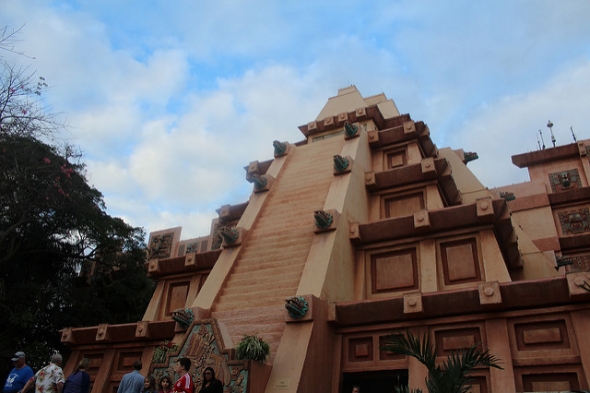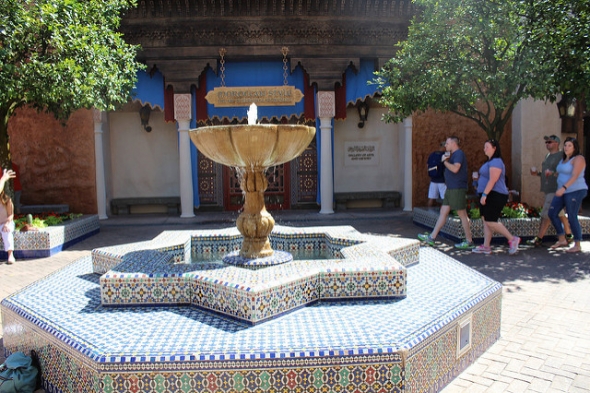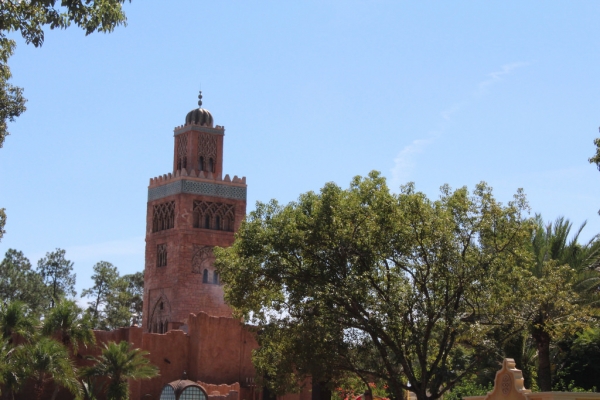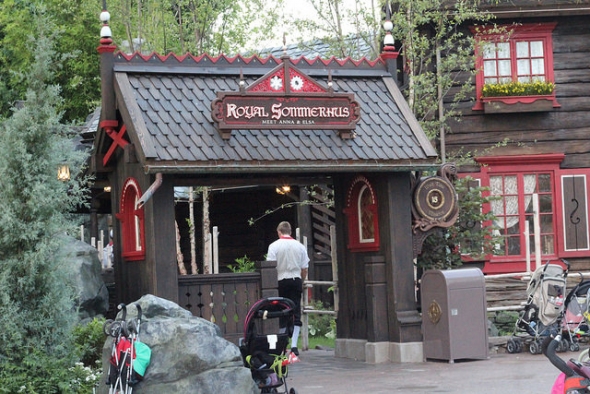The second wave
As early as 1979, Disney brokered deals with countries that still don’t have a presence at the World Showcase. Oddly, some of those negotiations completed successfully, only to fall apart later. Sometimes, the blame was Disney’s. On other occasions, the governments of the potentially joining countries changed or the corporations financially backing them backed out of a completed agreement.
In a specific instance, nobody could have foreseen the collapse of the deal. The implosion of the deal was…whose name would go first in a multi-country pavilion agreement. That’s a real thing that happened and the perfect example of how much turmoil EPCOT Center park planners faced in putting together the World Showcase as we know it.
Perhaps we can learn the most about why certain pavilions failed to materialize from the ones that arrived after EPCOT Center’s debut. Once the World Showcase opened on October 1, 1982, Disney had proof of concept for the next wave of countries desiring their own pavilions.
Park planners could show the revenue stream available to corporations willing to sign sponsorship agreements. They could also use the current nine pavilions as proof that EPCOT Center would boost tourism for the participating countries. This thought process is the reason why Disney accepted that they didn’t need financial backing from the original nine. They felt they could give away the first nine in exchange for paying members later. Once non-participating countries saw the benefits, Disney felt confident that these governments would more readily open their wallets.
Was Disney right? Well, they went two for everyone else…
And then there were ten.
I’m going to blur the timeline a bit here to discuss the first two additions to the World Showcase since they’re instrumental to understanding what Disney sought in their negotiations. As you may know, Morocco became the tenth participant in 1984, less than two years after EPCOT Center opened. It was the first pavilion to possess the business arrangement that Disney execs desired.
King Hassan II of Morocco ruled his country from 1961 until his death in 1999. The son of Sultan Mohammed V, he and his father led Morocco for 90 years, an absolutely staggering statistic. Despite the longevity of their rule, King Hassan II was only a decade removed from a coup attempt by his Minister of Defense when EPCOT Center opened. As a way to secure his perception in western civilization, the Moroccan ruler decided to construct a pavilion at Walt Disney World.
From Disney’s perspective, the human rights record of King Hassan II was problematic, but a Morocco Pavilion embodied Walt Disney’s vision for a permanent World’s Fair. Their culture and heritage is catnip to North Americans, and so they overlooked the potential political ramifications. It helped that the country’s ruler had sided with the United States, negating the potential public outcry at the time.
Best of all, King Hassan II was a billionaire. People only suspected this during the early 1980s, but it’s since been confirmed that he was one of the richest men who ever lived. The Moroccan ruler willingly paid for the entirety of the Morocco Pavilion. He cared about the project in a way that Disney had always hoped that every country would.
The son of the Sultan shipped dozens of his finest artisans to Orlando. Their sole purpose was to create a pavilion befitting the people of Morocco. The building itself features a minaret that would seem perfectly at home in Marrakesh. That’s because they used a real one as the inspiration. The famous commerce of Morocco also received special attention at the pavilion. The thematic Bazaar is the merchandising capital of the facility.
The current version of the Morocco Pavilion, still at least somewhat overseen by the Moroccan government, varies little from its original setup. That’s a tribute to the reverence the Moroccan people displayed in providing westerners with an authentic replication of their culture. More than any other pavilion at Epcot, this one exemplifies what Disney wanted and expected from the World Showcase. Each pavilion should accurately display a country’s heritage, and said country should pay for everything.
And then there were eleven
The Norway Pavilion has certainly received the most attention of any World Showcase participant in recent years. That’s due to a little film called Frozen. The ramifications of the most popular animated movie of all-time still ripple through Epcot today, but the early days of this project went exactly as Disney had hoped for all participants.
The government of Norway felt that their nation suffered from a tourism problem, particularly with North Americans. They carefully monitored the World Showcase during its early days and watched with more than curiosity when Morocco expanded the park in 1984. At this point, Norway’s deciders chose to jump in with both feet. History has justified their decision a thousand fold due to the Frozen factor, but it was already a great idea during the 1980s.
Due to the Norwegian government’s desire to add their presence to the World Showcase, Disney brokered another strong deal. The people of Norway invested at least $33 million in an endeavor that cost…$33 million. The Mouse House once again added new selling points to their park without spending much money. No less than the Crown Prince of Norway backed the project. The unmistakable conclusion is that Disney eventually realized that royal governments were less mercurial than ones with constantly rotating rulers.
The Norway Pavilion was once again close to what Disney park planners intended with the World Showcase. The Norwegian government itself couldn’t fund the entire project. Instead, they sought donations from corporations within the country to secure the requisite funding. Disney wound up with an entire government and a consortium of corporations tethered to the pavilion. It was again the most beneficial possible arrangement for them. If you’d like to read additional details, here’s an excellent newspaper article from 1988.





Comments
Interesting article! It certainly puts the conversion of Maelstrom into Frozen in a new light. By placing such a popular property into World Showcase, Disney is likely hoping for increased visits (and revenue) for EPCOT. If business gets better, it could be a deciding factor for nations still on the fence about pavilions of their own.
Disney doesn't seem to know what to do with Epcot. Futureworld just closes things and doesn't replace them. It's kind of sad to walk around there. I don't have any ideas for that except just don't make the place seem like a graveyard.
The Food and Wine festival proves how popular a world showcase can be.They should just bite the bullet and pay for more countries. There don't even have to be rides, just more culture. I think additions of countries could reinvigorate the park.